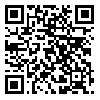Volume 1, Issue 2 (2021)
jpt 2021, 1(2): 101-117 |
Back to browse issues page
Download citation:
BibTeX | RIS | EndNote | Medlars | ProCite | Reference Manager | RefWorks
Send citation to:



BibTeX | RIS | EndNote | Medlars | ProCite | Reference Manager | RefWorks
Send citation to:
Haeri M. Some Remarks on Teaching Logic in Higher Education Institutions. jpt 2021; 1 (2) :101-117
URL: http://jpt.modares.ac.ir/article-34-48145-en.html
URL: http://jpt.modares.ac.ir/article-34-48145-en.html
Department of Philosophy, Faculty of Humanities, Tarbiat Modares University, Tehran, Iran , mohsen.haeri@hotmail.com
Abstract: (1814 Views)
In different branches of science, the word 'logic' can denote different scientific activities. Logic courses taught in humanities departments and the ones taught in engineering departments only share similar course titles, several preliminary definitions, and examples. This raises the question about the nature of logic and the purpose for teaching it to students of different academic majors in higher education institutions. Normally, the answer would be that logic, similar to other courses, equips students with tools or skills they will need in their studies. But what are these tools and skills, and what is the best method for teaching them to students of different academic majors? This article aims to answer this question by examining the three major options: Aristotelian logic, first-order predicate classical logic, and informal logic. I try to demonstrate philosophical and psychological reasons in favor of teaching informal logic as the main material in introductory courses in logic, specifically introductory courses aimed at students who do not major in logic.
Article Type: Original Research |
Subject:
Logic and Philosophy of Logic (Analytical)
Received: 2020/12/5 | Accepted: 2021/05/29 | Published: 2022/01/27
Received: 2020/12/5 | Accepted: 2021/05/29 | Published: 2022/01/27
Send email to the article author
| Rights and permissions | |
 |
This work is licensed under a Creative Commons Attribution-NonCommercial 4.0 International License. |







